Techland has announced that it will be releasing one final episode of its Dying 2 Know web series ahead of Dying Light 2 's launch next month, which the developer has promised will feature a "huge info drop" for fans, as well as new gameplay.
The final episode will premiere on Twitch on January 13 at 8pm GMT / 12pm PT / 3pm ET (7am AEDT on January 14). Host Leah Alexandra will be joined by Jonah Scott, the voice of main protagonist Aiden Caldwell.
The Dying 2 Know series began in May 2021 and has been the source of several major reveals for the game, including the casting of Rosario Dawson as Lawan and that A Plague Tale: Innocence composer Olivier Deriviere had created the music.
We're hoping that Techland has got a big surprise up its sleeve for this final episode - perhaps the reveal of another star casting or a multiplayer mode? The developer may, however, just use this episode to reveal a bunch of smaller details that it hasn't yet. If you want a recap on what we've learned from Dying 2 Know so far, so you know what likely won't be covered in this final episode, Techland has handily put together this video summary of all the biggest reveals so far. Check it out below:
Dying Light 2 lives
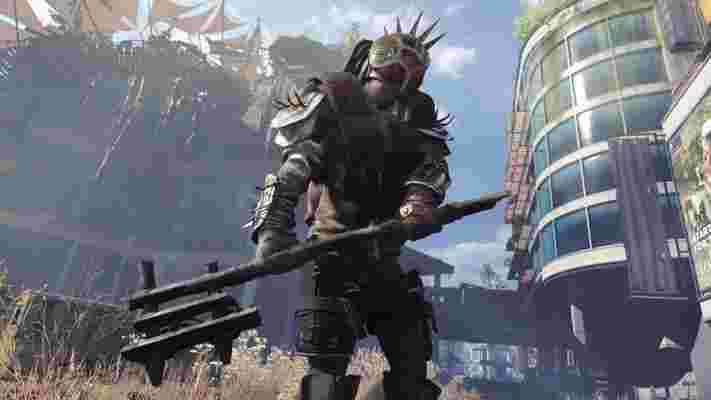
Dying Light 2 Stay Human is an action role-playing survival horror game and a sequel to 2015's Dying Light Announced in 2018, the game was originally slated for a "Spring 2020" release but was delayed due to the coronavirus pandemic.
Word on Dying Light 2's progress went completely silent for over a year, with Techland and the game resurfacing in 2021. A new release date of December 7, 2021 was given during the first Dying 2 Know presentation, but Techland was forced to delay it again to February 4, 2022.
Dying Light 2 will release for PS4, PS5 , Xbox One, Xbox Series X /S, and PC via Steam and the Epic Games Store. A cloud version will also be made available for the Nintendo Switch .
The Book of Boba Fett episode 4 recap: the weakest chapter so far
Spoilers for The Book of Boba Fett follow.
Beware the bacta tank!
For an inanimate object, Boba Fett’s soggy fortress of solitude has become a remarkably influential player in Disney Plus ’ latest Star Wars offering. As a signpost to the former bounty hunter’s frequent trips to flashback-land, it has the power to shape the direction of an entire episode.
And its appearance at the start of ‘The Gathering Storm’ proves to be something of a portent of doom, as this is definitely The Book of Boba Fett’s weakest chapter so far.
By the time we’re transported back to Boba's crime-boss present – a very long half-hour later– we’ve barely learned anything that we didn’t know before.
Instead, the rescues of both Fennec Shand and Boba’s famous ship take center stage in this Sandcrawler-paced episode. Ultimately, it feels like unnecessary filler, as the few additions to the vast Star Wars mythology – the most intriguing being a nod to Bib Fortuna’s double crossing ways – could easily have been explained away in a comic, a book or even some well-placed lines of dialogue.

The one significant positive is a beefed up role for Fennec Shand, who’s been a disappointingly minor player up in the show up to now. As the flashback timeline intersects with her appearance in The Mandalorian season 1, however, we gradually come to understand the nature of her relationship with her fellow bounty hunter – and how he saved her after being “left for dead on the sands of Tatooine”.
When it comes to understanding how a mercenary went from paying off a debt to becoming her rescuer’s most loyal disciple, this is undeniably essential information. But the evolution of the duo’s relationship feels simultaneously rushed and ponderous, as the key character beats are reduced to rapid-fire hits struggling for oxygen among some excessive, tedious padding.
Their mission to recover the renamed Firespray gunship – a story that didn’t need to stretch beyond Boba remembering where he had parked it – is a subsequently strangely muted affair. Its tour of Jabba’s Palace, in particular, is as pedestrian as the Millennium Falcon flythrough available on Disney Plus.
Anyone who’s seen The Mandalorian season 2 episode 6 will know their endeavor is successful anyway, so the sequence is constantly battling the spectre of pointlessness. And their trip to the Sarlacc is similarly disappointing aside from a brilliant jump scare, with this overblown encounter amounting to little more than Fett settling a score – and the not-really-a-revelation that his armor is hidden elsewhere.
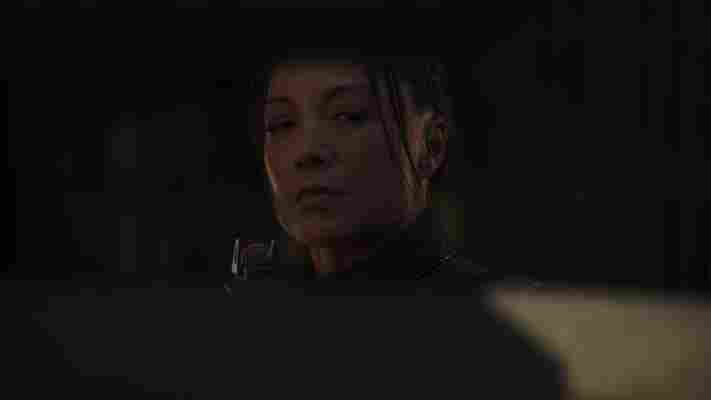
If ‘The Gathering Storm’ is a good week for Fennec Shand, it’s a terrible one for the titular antihero. The show is now at serious risk of entering a death spiral where everything new we learn about the iconic (ex) bounty hunter dilutes his carefully crafted mystique. Admittedly, Fett was as close to a blank slate as it’s possible for a 40-something character to be. But, the more The Book of Boba Fett gets under the helmet, the less interesting he becomes.
These days, the most feared bounty hunter in the galaxy seems as concerned about the welfare and employment rights of his fellow mercenaries as securing his status as top-dog on Tatooine. We can’t help but be reminded of Grocer’s fledgling hitman union in Grosse Pointe Blank.
And, while Fett’s previous moves towards ruling by respect could be justified as pure and logical pragmatism, he’s now shifting so far towards the light that he no longer feels like the Boba Fett we thought we knew – and definitely loved.
But Fett’s inconsistent character evolution is just one manifestation of the episode’s frustrating tonal inconsistencies. The rare hints at the gangster aspects of the show – notably where Fett uses his newly recovered Firespray to brutally gun down the gang that massacred his Tusken friends – sit uneasily next to the slapstick of Jabba’s Palace, where comedy droids are routinely dispatched by a pair of highly trained assassins.
And if you didn’t like the Vespa-riding mods last week – or even got yourself hooked on zip-gate – chances are you’re going to hate the tattoo shop/dance music aesthetic of the cybernetics parlor where Fett pays the proprietor to repair Fennec. While there’s no doubt Star Wars has to evolve if it’s going to stay relevant, this feels like someone trying too hard to appeal to the kids, and missing the mark spectacularly. The original Star Wars captured millions of imaginations with its believable otherworldliness – the riffs on the real world here, however, make the story feel less plausible. And, to give it a video game sensibility, a bit too Cyberpunk 2077-esque.
Boba eventually waking from his bacta slumber feels like a blessed release, but it soon becomes clear that the episode isn’t going to live up to its portentous title – indeed, this ‘Gathering Storm’ may have even less to offer than the one the old lady warned Anakin about in The Phantom Menace.
After last week’s instalment suggested that pieces were falling into place for some major gangster showdown – hopefully with someone or something more substantial than the Pykes – Tatooine’s criminal community appears to have gone into a collective state of hibernation. Madam Garsa trying to talk down Black Krrsantan from full-on Wookiee beserker mode makes you want to see more of the Sanctuary’s Twi’lek boss, but Fett and Shand’s working lunch with the heads of the various families stuggles to match the drama of an average episode of Come Dine With Me. Not even the threat of Boba’s pet Rancor can liven things up.
Now that the title character is “completely healed”, The Book of Boba Fett has hopefully lost the excuse to devote much of its remaining running time to flashbacks. There’s only so much they can tell us about his impending discovery that a marshal in Mos Pelgo is wearing his famous suit. Well, we hope anyway.
Ultimately, ‘The Gathering Storm’ is an episode you could quite happily skip, safe in the knowledge that next week’s “Previously on The Book of Boba Fett” recap will tell you everything you need to know. And, for a franchise as beloved as Star Wars, statements don’t come much more damning than that.
Our verdict
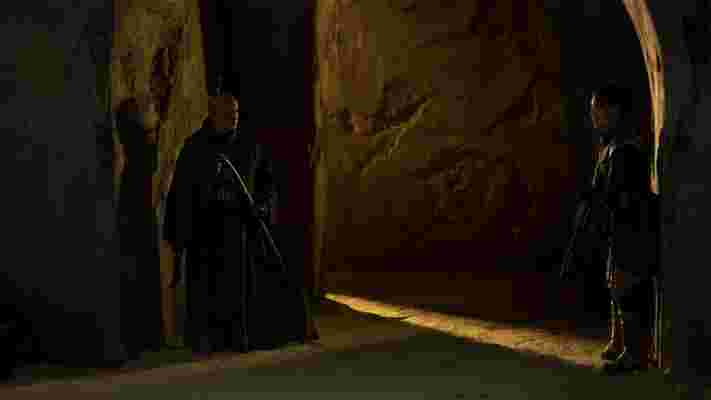
The Book of Boba Fett has been a constant push-and-pull between flashbacks and driving its story forward. ‘The Gathering Storm’, however, proves to be a no-win scenario on both counts, an episode that fails to build on either existing Star Wars lore or the show’s promising allusions to The Godfather.
At some point in the series’ development, the writing team clearly decided that filling gaps in Fett’s sparse mythology was the priority, and they’ve neglected the opportunity to put the man and his amazing armor into exciting scenarios. This is the episode where that choice feels like a massive error of judgment, bringing the absence of a McGuffin as powerful as Baby Yoda into sharp relief. Too many more episodes like this and fans are going to want to put The Book of Boba Fett down for good and metaphorically read something far more interesting.
Force facts
New episodes of The Book of Boba Fett debut on Disney Plus every Wednesday.
CES 2022 was a great example of the changes coming to PC gaming
CES 2022 is on the way out, and it was another odd year for the show as we all covered it from the comfort of our chairs, rather than endlessly running between different hotels in Las Vegas. However, what felt exceptionally strange is how much of the PC gaming presence at the show revolved around the best gaming laptops .
While the gaming PC isn’t going anywhere – we got our fair share of exciting components like the Nvidia GeForce RTX 3050 and some juicy gaming monitors like the Alienware AW3423DW – when you turn to the three giant PC hardware companies, AMD’s, Intel’s and Nvidia’s presentations revolved mostly around laptops, even if there were bits of desktop news laced in there.
It’s entirely possible that this is because CES is a show for the tech world at large, and laptops in general are more mainstream-friendly than a hulking gaming PC. But it goes further than that.
In the face of a global silicon shortage that’s been going on for two years now, gaming laptops are starting to become one of the easiest ways to get into PC gaming, where traditionally it’s always been the other way around.
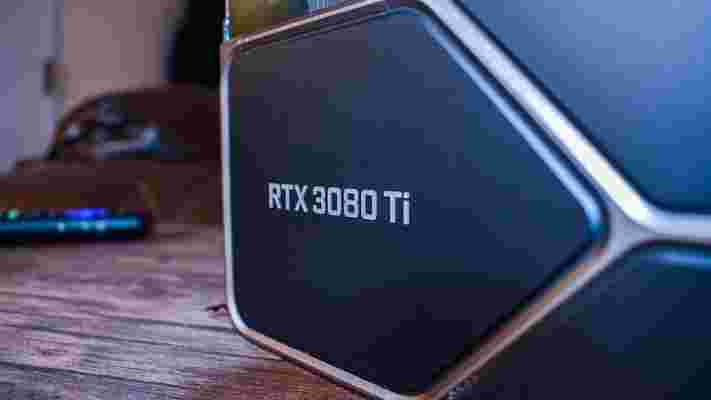
Building a PC is expensive now
When I built my first PC with my own money, I was able to build something that was more than powerful enough to play the latest games for just under $1,000. Of course the hard-to-run monster of a game at the time was The Witcher 2, but I was able to run it at 1080p and high settings – though of course without the Ubersampling that’s still hard to run today.
However, with how expensive graphics cards are right now and scaling that to 1440p, that’s just not possible anymore. The go-to 1440p graphics cards right now are the Nvidia GeForce RTX 3070 and the AMD Radeon RX 6700 XT . The former is listed on Newegg right now for about $1,000 – the price of my first PC by itself – and the AMD card is sitting around the same price on Amazon. And that’s before you even mention a high-end card like the Nvidia GeForce RTX 3080, which will set you back $2,000 before you even think about buying any other parts.
While AMD and Nvidia both announced some reasonably priced graphics cards at CES 2022, it’s kind of hard to get excited for them since they’re likely going to be sold out almost immediately.
During a roundtable discussion at CES 2022, AMD CEO Lisa Su was even asked by Gordon Ung at PCWorld about why gamers should be excited for a $200 GPU right now when it will likely just see its price inflated after a day. Su assured us that “we [AMD] did ship a lot more desktop GPUs in the second half of '21 than we did in the first half. So not everyone has gotten them, but more people have definitely gotten them in the second half of '21. And you're going to see many more in 2022.” And AMD plans to have more availability when the GPU comes out. AMD CVP Laura Smith expanded on that saying that the relatively low specs of the 6500 XT should mean that the crypto market won’t impact availability as much.
But these are all things we’ve heard before, and while I do think that the silicon shortage is going to come to an end eventually - it probably isn’t going to happen for a while, at least until more foundries come online to help supply the huge demand that semiconductors have in 2022.
In the meantime, as manufacturing catches up with the demand, my recommendations to friends and family have changed completely over the last couple of years.

Gaming laptops are cool now
Like anyone that is a little too into computers, everyone in my life constantly comes to me asking for advice around PCs – whether something is broken or they just want to know what to buy. Plus, recommending tech is literally what I do for a living, so that helps too.
But if we were to rewind to 2019, my default recommendation for someone looking to get into PC gaming probably would have been to build a PC . It’s a fun project, and back then you could piece together a pretty decent build, thanks to affordable GPUs like the Nvidia GeForce GTX 1660 Super .
And generally speaking, gaming laptops were just never a good deal from a value perspective at the time. They’d cost way more than a desktop for a similar level of performance, and were usually too bulky to be portable enough to make up for the difference in cost and framerates. That’s all changed in the last few years.
Now, if you’re looking for a gaming laptop, you can get a pretty excellent one for about $1,000 / £1,000 / AU$1,500, especially if you are looking for 1080p gaming performance. For the first time in years, though, you can’t really build a gaming PC at that price that can offer comparable gaming performance. So while a prebuilt gaming PC is still a slightly better value than a gaming laptop, portable devices are becoming more and more affordable.
At the same time, gaming laptops are becoming more attractive, too. Thin and light gaming laptops are increasingly the norm, and during the AMD CES 2022 keynote , we heard how that segment has grown three times. Gaming laptops like the Alienware X14, the Razer Blade 14 and the Asus ROG Zephyrus G14 are changing what gaming laptops look like. Now it’s something you can carry around in your backpack without needing to schedule back surgery a few months later.
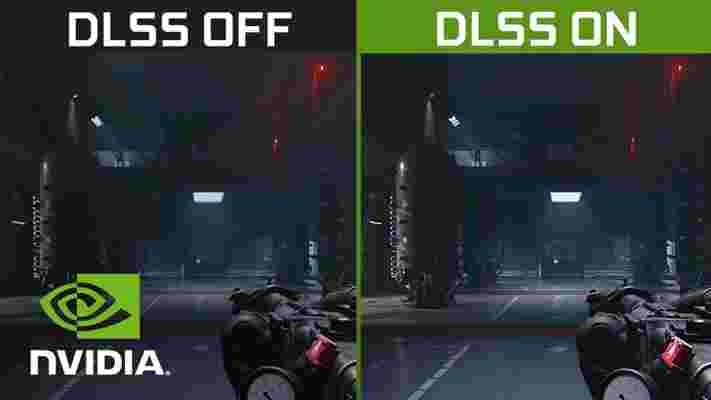
The software is helping a lot
When Nvidia announced the GeForce RTX 2080 in August 2018, it spent a lot of time talking about both ray tracing and DLSS, particularly the former. While a lot of us (myself included), initially paid more attention to ray tracing, thinking it would be the game-changing technology of the two, it cannot be understated how important upscaling technology like DLSS has become. If CES 2022 has been any indication, it’s about to become even more important.
Both AMD and Nvidia now have special upscaling tech, and Team Red announced a second one called Radeon Super Resolution. It’s a less effective version of FSR that’s driver-based. That sounds unexciting on the surface, but it will allow upscaling in pretty much any game you want to enable it in.
Then there’s Intel; its Arc Alchemist GPUs haven’t even hit the market yet. Even ahead of entering the discrete GPU market for the first time, a pretty decent portion of Team Blue’s CES 2022 keynote was focused on XeSS, Intel’s answer to DLSS and FSR. With how complicated and beautiful the best PC games are becoming – just look at Battlefield 2042’s visuals and the high requirements of Dying Light 2 – upscaling is going to become the future. After all, you can never have enough performance in the world of PC gaming.
While these software solutions are a benefit to gamers that are running desktop PCs, they’re a godsend for the best gaming laptops. As we see more flagship devices shipping with 4K displays, this kind of technology is absolutely essential to drive high resolutions, and it’s going to become even more important over the next few years.
That’s why I applaud Radeon Super Resolution. To be clear, it’s not going to be anywhere near as effective as DLSS. Nvidia’s upscaling tech is the best in the market right now, and the latest titles that include it look so good that it’s silly to not use it, even if you don’t need the extra performance to hit 60 fps. But with DLSS, game developers still need to program in support on an individual game basis. RSR, on the other hand, should make more games more accessible, which is exactly what we need right now.
I hope that Nvidia has a similar iteration of DLSS in the works sometime soon. I don’t know how it would work, but I’ve been asking Team Green for a driver-wide DLSS implementation since I first saw it four years ago. With how fast gaming laptops are growing, and with how pretty games are getting, now would be the perfect time to start working on something like that.
Hopefully by CES 2023, the changes we’ve seen will grow into something beautiful that makes PC gaming accessible to everyone again. Even if that falls to software solutions rather than raw hardware like it has in the past.